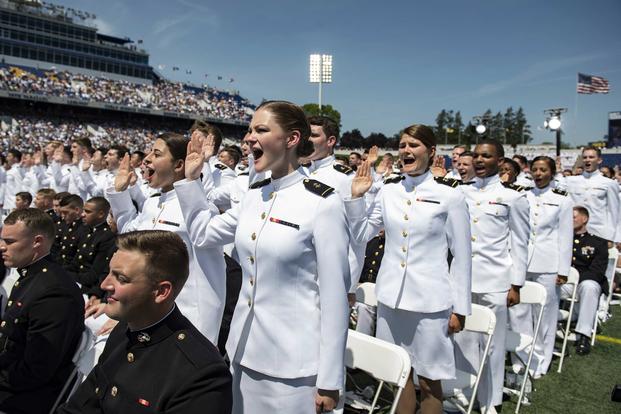More female officers should be serving in top Navy command posts, the admiral nominated to lead the service said Tuesday, but it could take years for it to happen.
About a quarter of new Navy officers are women, but they're not staying on long enough to serve in key leadership positions. Of the more than 370 naval officers recently promoted to captain -- the rank at which officers can lead major commands such as aircraft carriers, amphibious assault ships or submarine squadrons -- about 8% were women.
"It needs to be higher than that," Vice Chief of Naval Operations Adm. Bill Moran said at an event hosted by the Center for Strategic and International Studies and the U.S. Naval Institute. "But you've got to build a base, and the base has to stay with the team long enough to be in a position to promote at those higher rates."
The Navy has been driving efforts to make military careers more flexible. The programs, which allow for more maternity and paternity leave or the option of taking three years off mid-career to start a family or pursue other goals, have been aimed at encouraging more women to consider joining and staying in the service.
Related content:
- Number of Female Generals, Admirals Has Doubled Since 2000, Report Finds
- More Meritorious Promotions, Flexible Careers as Navy Fights to Keep Sailors
- The Military's Officer Promotion System May See Major Shake-Up
- Need a Break? Air Force Expands Sabbatical Program
But even though some of those programs have been in place for years, Moran said it will take several more to see if they're making a difference when it comes to female retention.
"We have to take the long view here to see if we can start retaining women at a higher rate, because until they retain at the same percentage at each of those milestones, you're going to have a smaller number to select from when they get to the O-5, O-6 and above ranks," he said.
Moran served as chief of naval personnel when many of those reforms were enacted. They were spearheaded by former Navy Secretary Ray Mabus, who in 2015 said he wanted to see women make up a quarter of the sea services.
The Air Force has historically had the highest percentage of female service members among all the branches, but now the Navy is outpacing it, with women making up more than 25% of new enlistees, according to data from CNA.
The Naval Academy is also seeing historic growth when it comes to female midshipmen. The last two years have been the highest on record for women, Moran said, and the numbers are continuing to climb.
"Finding highly qualified, talented women who want to serve is not the issue," he said. "The issue is making service in the Navy compatible with some of their other desires as they want to move on in their careers."
Congress has given the military authority to make officers' careers more flexible. Reforms in the 2019 defense authorization act gave the military the OK to bring in officers with special skills at higher ranks, end up-or-out rules that derailed some officers' careers, and create a more merit-based promotion system.
Several of those reforms were the result of Navy leaders pushing for change, Moran said.
"I think we're doing the right things," he said. "But only three or four years into it, in many cases less time than that, is not enough time to see what adjustments we need to make."
-- Gina Harkins can be reached at gina.harkins@military.com. Follow her on Twitter @ginaaharkins.












